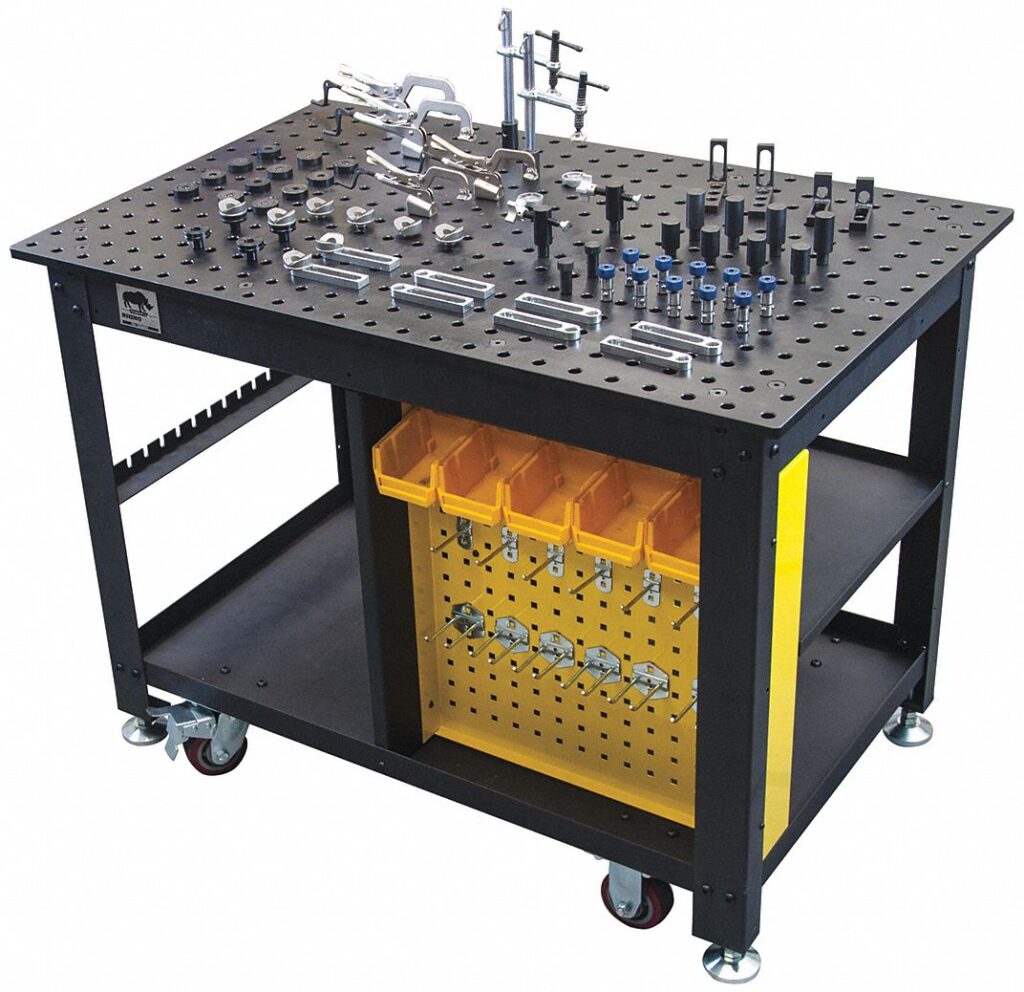Working with a welding table poses certain risks and hazards that require safety measures to ensure the safety of the user and others in the workspace. Welding produces heat, sparks, and radiation that can cause burns, eye damage, and respiratory problems if proper safety measures are not taken.
Here are some safety measures to take when working with a welding table:
1.Wear Personal Protective Equipment (PPE):
Wear appropriate personal protective equipment, such as safety glasses, leather gloves, and a welding helmet, to protect yourself from sparks, debris, and radiation. PPE is essential to protect the user’s eyes, face, hands, and body from hazards associated with welding.
2.Use Proper Ventilation:
Welding produces hazardous fumes and gases that can be harmful if inhaled. Always work in a well-ventilated area or use a fume extractor to remove hazardous fumes and gases from the workspace. Proper ventilation is essential to prevent respiratory problems associated with welding.
3.Inspect the Welding Table:
Before using the welding table, inspect it for any signs of damage or wear and tear that may affect its stability or performance. Check for any cracks, dents, or other damage that may cause the table to collapse or tip over. Repair or replace the table as necessary.

4.Secure the Workpiece:
Use appropriate fixtures and accessories, such as clamps, magnets, or v-blocks, to hold the workpiece securely in place. This will prevent it from moving or shifting during the welding process. A securely held workpiece is essential to prevent accidents or injuries.
5.Avoid Touching the Table:
Avoid touching the table or the workpiece immediately after welding, as it can be extremely hot. Wait for the surface to cool down before touching it or removing the workpiece. Touching a hot surface can cause burns or other injuries.
6.Store Flammable Materials Safely:
Welding produces sparks and heat that can ignite flammable materials. Store flammable materials away from the welding table and use appropriate fire extinguishing equipment nearby. Proper storage of flammable materials is essential to prevent fires or explosions.
7.Keep the Workspace Clean:
Keep the workspace clean and free of clutter to prevent tripping hazards. Avoid leaving tools or materials lying around that can cause an accident. A clean workspace is essential to prevent accidents or injuries.
8.Use Appropriate Welding Techniques:
Use appropriate welding techniques, such as proper grounding and polarity, to prevent electrical hazards. Improper welding techniques can cause electrical hazards that can cause electrocution or other injuries.
9.Turn off the Welding Machine:
Always turn off the welding machine when it’s not in use. This will prevent accidental start-up or electrical hazards. Turning off the welding machine is essential to prevent accidents or injuries.
10.Educate and Train Workers:
Educate and train workers on proper welding techniques, safety measures, and emergency procedures to prevent accidents and injuries in the workspace. Proper education and training of workers are essential to ensure safety in the workspace.
In conclusion, working with a welding table involves certain risks and hazards that require safety measures to ensure the safety of the user and others in the workspace. Taking safety measures such as wearing personal protective equipment, using proper ventilation, inspecting the welding table, securing the workpiece, avoiding touching the table, storing flammable materials safely, keeping the workspace clean, using appropriate welding techniques, turning off the welding machine, and educating and training workers is crucial to ensure a safe and comfortable working environment for metalworking tasks. By following these safety measures, the user can ensure that the welding table provides a safe and comfortable working environment for metalworking tasks.